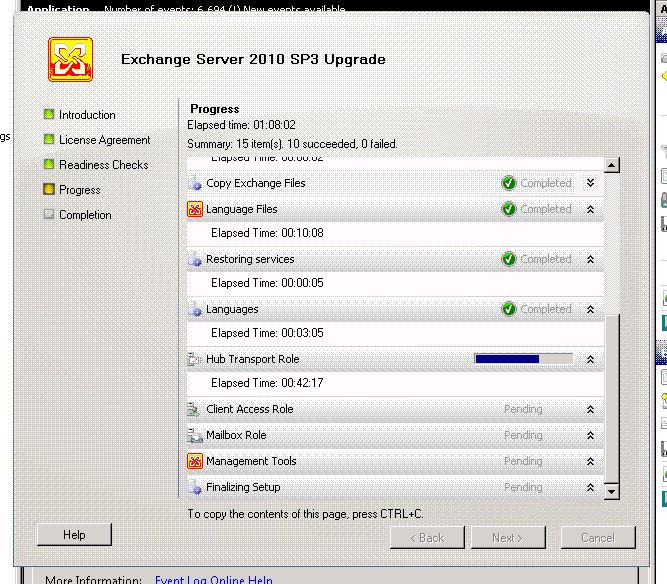

Otherwise the schema update will be applied when you upgrade the first Exchange server. If you have an AD forest topology with multiple domains, or process restrictions that require schema updates to be managed a certain way, you can apply the Exchange 2010 SP3 schema update on a 64-bit domain controller that is in the same AD site as the Schema Master, using an account with Schema Admins and Enterprise Admins rights.Ĭ : AdminEx2010SP3 & gt setup. I’m going to walk through the upgrade process in some more detail next, and also provide some general guidance afterwards about the Service Pack 3 installation steps as well as what to expect in terms of timing and service interruptions. You should also plan to update any management tools installations you have on admin workstations or servers, and also check your third party applications that integrate with Exchange in case they also need updated management tools.
#Exchange 2010 sp3 download
You can download Exchange 2010 Service Pack 3 here and extract the files ready to be installed on your servers. Preparing to Upgrade to Exchange 2010 SP3

Exchange 2010 Service Pack 3 Step by Step.Upgrading Other Server Roles to Exchange 2010 SP3.Updating Mailbox Servers to Exchange 2010 SP3.Updating Client Access Servers to Exchange 2010 SP3.Preparing to Upgrade to Exchange 2010 SP3.The co-existence support for Exchange 2013 does not apply to Exchange 2013 RTM, but rather Exchange 2013 CU1 (cumulative update 1) due for release in Q1 of 2013 (within about 6 weeks from the time of this writing).The support for Windows Server 2012, which ships with PowerShell 3, does not mean that Exchange 2010 SP3 also supports upgrading to PowerShell 3 on other operating systems.The support for Windows Server 2012 includes both the installation of SP3 on Server 2012, and the interoperability of Exchange 2010 SP3 with Server 2012 domain controllers.
#Exchange 2010 sp3 install
You can actually install on Windows Server 2012, although exact pre-requisite guidance may not be available yet. The SP3 release notes state you can only install on Windows Server 2008 SP2 or 2008 R2.

It actually includes all security and bug fixes up to SP2 UR6. Exchange 2010 SP3 is listed as including all security bug fixes up to SP2 UR5-v2.If that is a concern for your environment, but you still want the bug fixes and security updates, you might consider sticking with Service Pack 2 and applying Update Rollup 6 instead.Īt the time of this writing there are some points in the various release notes that aren’t correct or fully updated yet that Microsoft are still working on or that are worth some clarification: If you are planning to upgrade your Exchange 2010 servers to SP3 you should be aware that there is an Active Directory schema update involved. This is a significant release that delivers some key functionality to customers such as support for Windows Server 2012, support for co-existence with Exchange Server 2013 CU1, and general bug fixes and security updates. Microsoft has released Service Pack 3 for Exchange Server 2010.


 0 kommentar(er)
0 kommentar(er)
